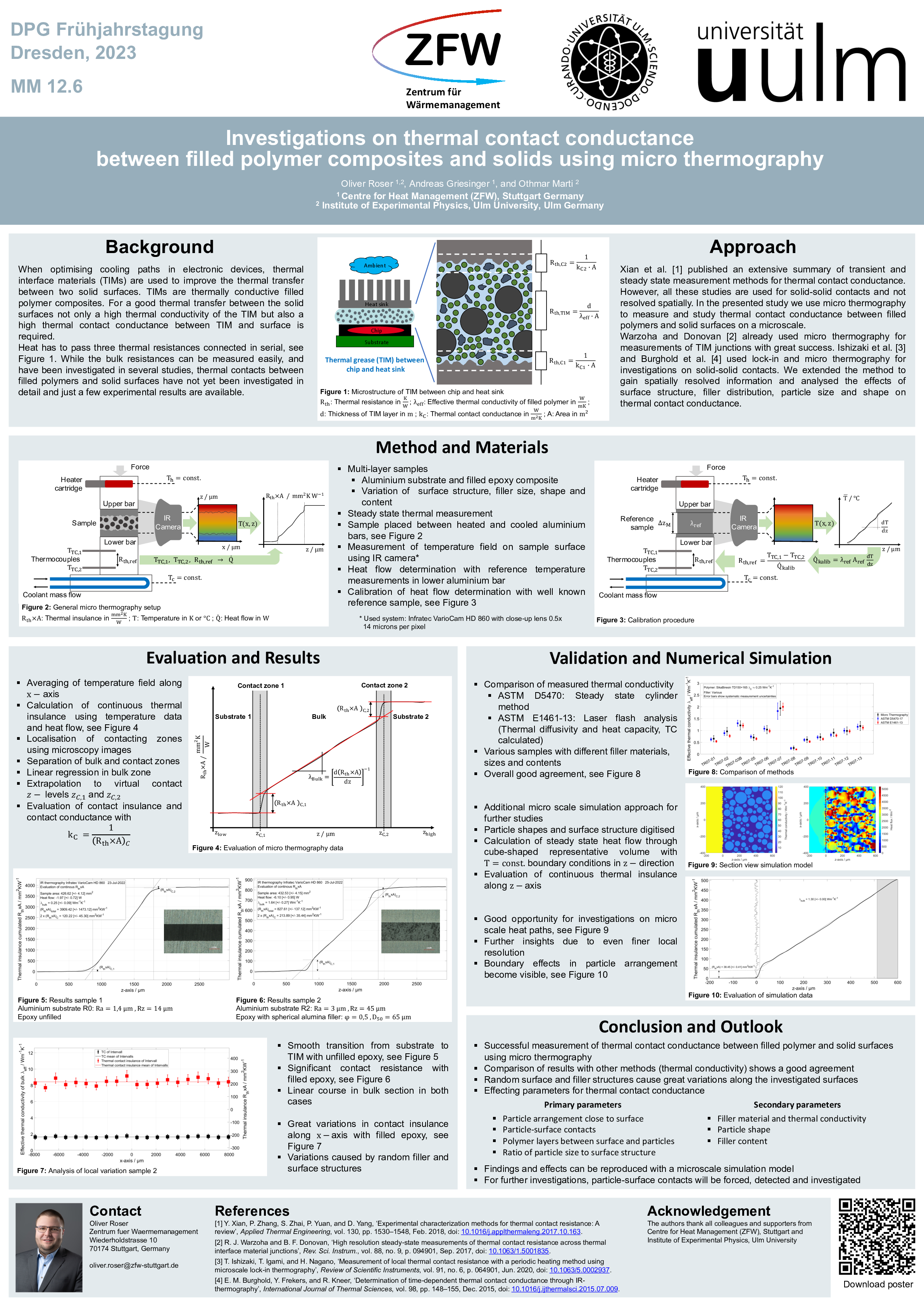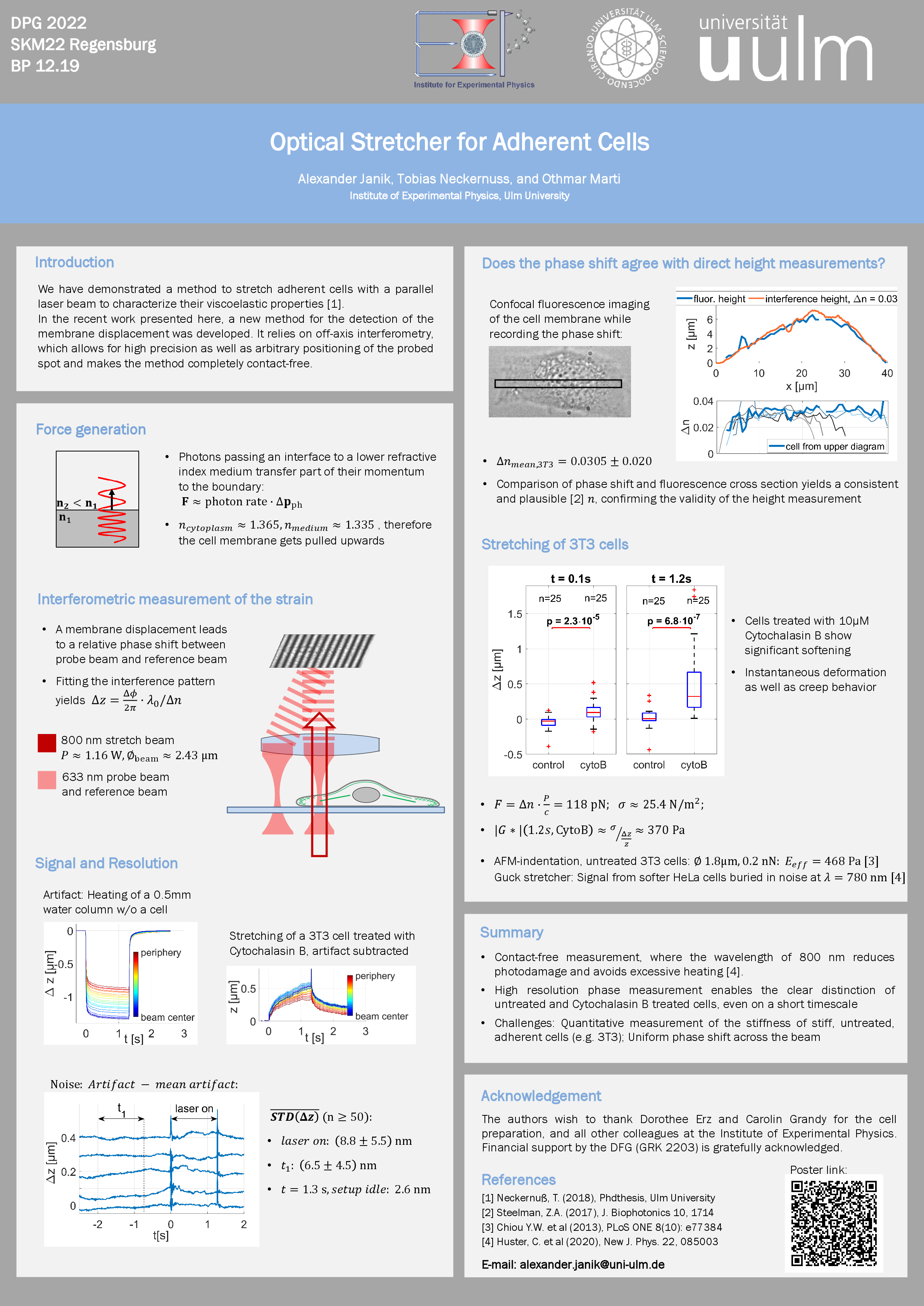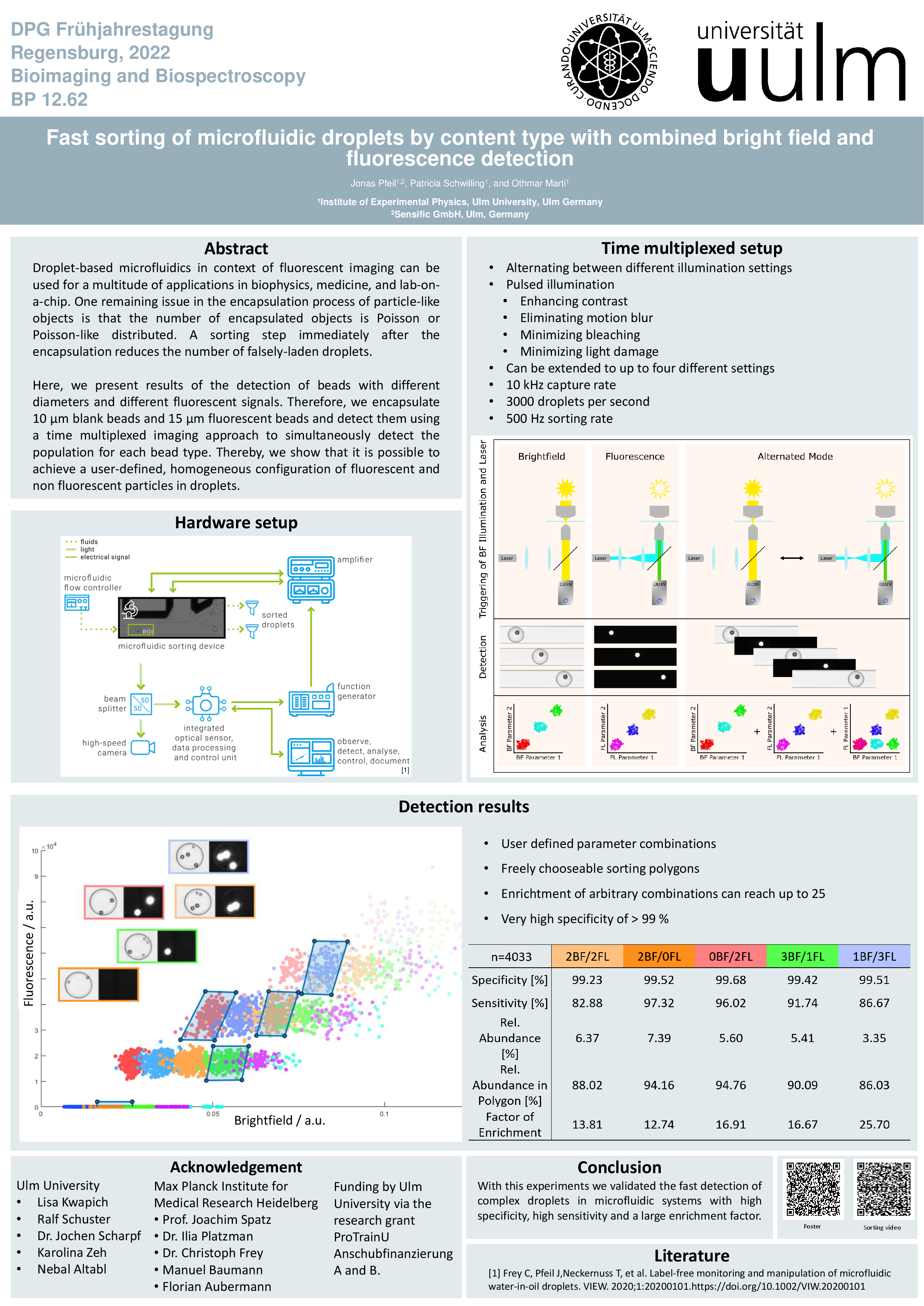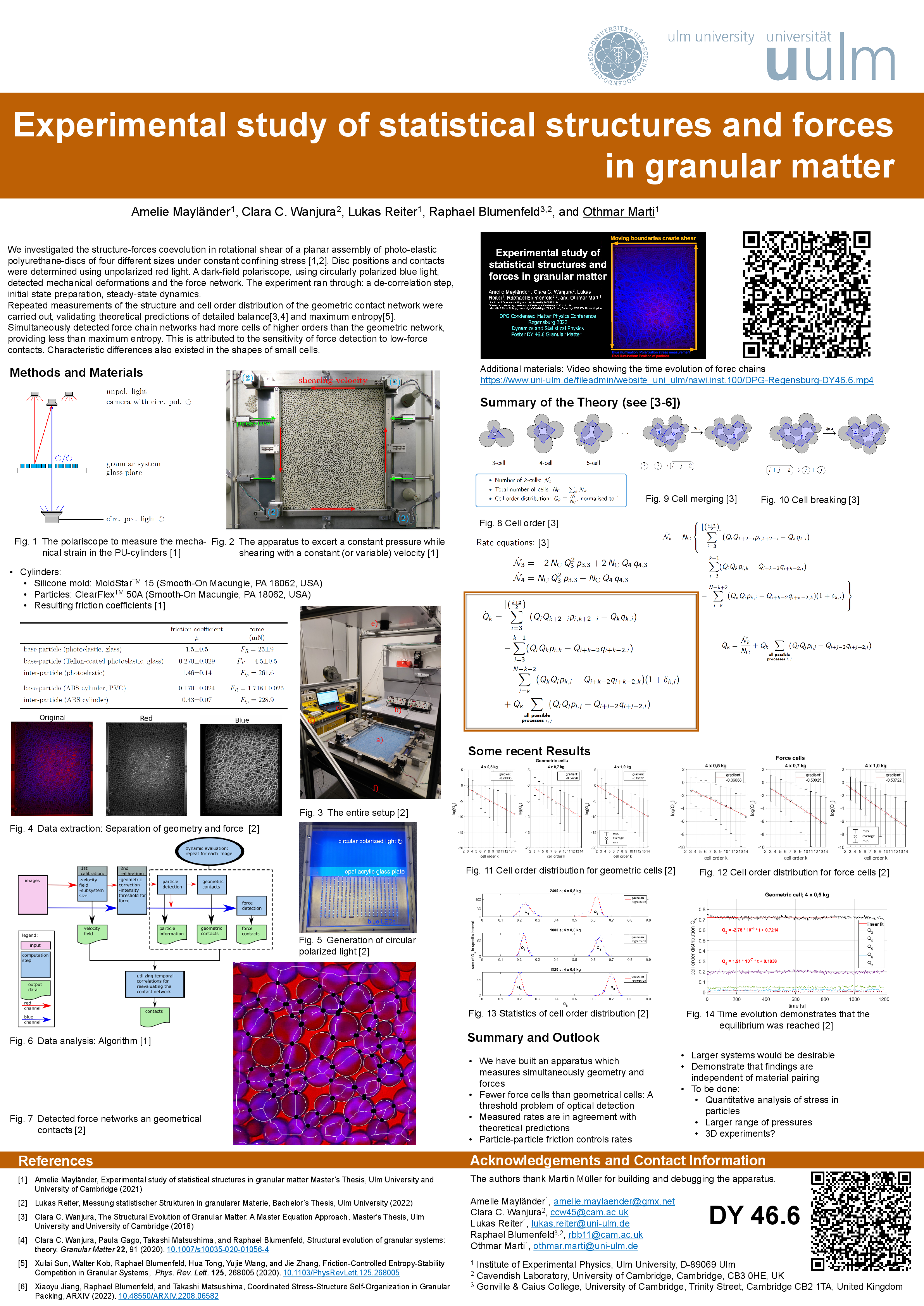
DPG-Frühjahrstagung Berlin 2024
Multi-scale modeling of heat conduction in filled polymer composites
Oliver Roser(1,2), Andreas Griesinger (1) and Othmar Marti(2)
(1) Centre for Heat Management (ZFW) Stuttgart, Germany
(2) Institute of Experimental Physics, Ulm University, Ulm, Germany
Poster MM 12.6 DPG-Frühjahrstagung Dresden

DPG-Frühjahrsragung Dresden
Oliver Roser(1,2), Andreas Griesinger (1) and Othmar Marti(2)
(1) Centre for Heat Management (ZFW) Stuttgart, Germany
(2) Institute of Experimental Physics, Ulm University, Ulm, Germany
Video DPG-Regensburg-DY46.6.mp4 zu Poster DY46.6 "Experimental study of statistical structures and forces in granular matter"
Poster DY46.6 "Experimental study of statistical structures and forces in granular matter"

We have demonstrated a method to stretch adherent cells with a parallel laser beam in the past to characterize their viscoelastic viscoelastic properties.
In the recent work presented, a new method for the detection of the membrane displacement was developed. It relies on off-axis interferometry, which allows for high precision as well as arbitrary positioning of the probed spot and makes the the method completely contact-free.
Droplet-based microfluidics in context of fluorescent imaging can be used for a multitude of applications in biophysics, medicine, and lab-on-a-chip. One remaining issue in the encapsulation process of particle-like objects is that the number of encapsulated objects is Poisson or Poisson-like distributed. A sorting step immediately after the encapsulation reduces the number of falsely-laden droplets.
Here we present results of detecting of beads with similar diameters and different fluorescent signals. Therefore, we encapsulate similar sized beads with different fluorescent signature and detect them using a time multiplexed imaging approach to simultaneously detect the population for each bead type. Thereby, we show that it is possible to achieve a user-defined, homogeneous configuration of fluorescent and non fluorescent particles in droplets.

Droplet-based microfluidics in context of fluorescent imaging can be used for a multitude of applications in biophysics, medicine, and lab-on-a-chip. One remaining issue in the encapsulation process of particle-like objects is that the number of encapsulated objects is Poisson or Poisson-like distributed. A sorting step immediately after the encapsulation reduces the number of falsely-laden droplets.
Here we present results of detecting of beads with similar diameters and different fluorescent signals. Therefore, we encapsulate similar sized beads with different fluorescent signature and detect them using a time multiplexed imaging approach to simultaneously detect the population for each bead type. Thereby, we show that it is possible to achieve a user-defined, homogeneous configuration of fluorescent and non fluorescent particles in droplets.

